According to affidavits filed by prosecutors and Waco police in the civil forfeiture cases, tensions between the Bandidos and Cossacks had been increasing since the Cossacks began wearing a bottom rocker, or patch, with Texas on it rather than specific counties or towns.
According to police intelligence reports, groups wanting to wear Texas rockers must get permission from the Bandidos.
The affidavits list six incidents dating to November 2013 that foreshadowed the collision course on which the Cossacks and Bandidos motorcycle clubs, which law enforcement identify as criminal street gangs, and their support groups were traveling.
The documents detail an incident in 2013 in Abilene outside a Logan’s Roadhouse restaurant in which several Bandidos and Cossacks fought after the Bandidos damaged some Cossacks’ bikes in the parking lot. One of the Cossacks stabbed was Timothy Shane Satterwhite, 47, who was among those arrested in Waco after the Twin Peaks incident.
Two others Cossacks involved in the Abilene incident, including another who was stabbed, also were in Waco that day.
On March 22, several members of a Bandidos support group attacked a lone Cossack who was getting gas in Palo Pinto County. The Bandidos support members demanded he remove the bottom rocker patch on his jacket. When he refused, the others beat him with a hammer and took his jacket, according to the affidavits.
That same day, about seven Cossacks blocked in a Bandido riding in heavy traffic on Interstate 35 in Lorena and beat him, causing blunt-force trauma to his head, the documents show.
A week later, a Waco police gang-intelligence officer got word that there were Bandidos at the Flying J Truck Stop and a large number of Cossacks at the nearby Legends Cycles on the I-35 access road.
A Waco police commander talked to Legends owner John Wilson, the president of the local Cossacks chapter, and saw an assault rifle inside the business.
“Wilson stated that they knew trouble was possible between the two groups and that they (Cossacks) were prepared,” the document states.
Wilson and his son, Jake, the local Cossacks sergeant-at-arms, both were arrested at Twin Peaks on May 17.
On April 16, Twin Peaks hosted a Bike Night attended by 55 Cossacks and members of the Los Caballeros, a Bandidos support group. Nothing happened that night, but there was a large police presence there from at least five agencies.
The following week, a Cossacks member was arrested in a parking lot near Twin Peaks with a gun, a knife and a bandana with a padlock tied to it and said he was waiting for other Cossacks to arrive. The same man was arrested after the May 17 incident at Twin Peaks, the affidavits say.
Meeting moved
The incident erupted in Waco, according to the documents, after the meeting of the Region 1 Confederation of Clubs and Independents was moved from Austin to the Twin Peaks in Waco. Nearly all of the recent Region 1 COC&I meetings had been held in Austin, and it is not common for members of any of the other 11 COC&I regions in Texas to attend a regional meeting of another area of the Texas COC&I, the affidavits say. Many of the 177 bikers arrested in the Twin Peaks shootout were from outside Region 1.
The Cossacks are not members of the local COC&I and the Bandidos are. However, the Cossacks consider Waco “their territory and made the decision to take a stand and attend the meeting uninvited,” according to the court documents.
“Cossacks threatened that Waco was a ‘Cossacks town’ and nobody else could ride there,” the records state. “The large number of Bandidos and their supporters showed up to the Region 1 COC&I meeting because the Bandidos wanted to have a show of force and make a statement that Waco was not the Cossacks’ town.”
On May 17, several members of the Cossacks and their support groups, the Bogatyrs and Scimitars, arrived an hour or more before the scheduled 1 p.m. meeting. They took over the patio area, which had been reserved for the COC&I meeting.
They also had members inside the restaurant and along the perimeter of the parking lot, the affidavits say, adding that members appeared to be posted as sentries.
Viewing videos from Twin Peaks and Don Carlos, police say they were able to see several Cossacks reach under their vests and appear to adjust their weapons or check their weapons. They had handguns and knives as they walked around the patio, and officers said they also could see Bandidos, Machateros and Caballeros members standing along the perimeter of the parking lot.
As another group of Bandidos arrived in the Twin Peaks parking lot, several Cossacks, Bogatyrs and Scimitars climbed over the patio railing and went toward the Bandidos.
“Several of the Cossacks pulled their weapons, including handguns, as they stood on the patio and exited the patio,” the affidavits say.
Scimitars moved to the front entrance of the patio, appearing to take a “rear guard” position for the Cossacks, the documents allege.
A Bandido nearly struck a Cossack with his motorcycle in the parking lot. Members of both groups converged and a Bandido punched a Cossack in the face.
“Several Bandidos and Cossacks pulled out guns and knives, and shot and stabbed each other,” the records show.
The court documents say 20 were hospitalized after the fight, two more than initially reported by police. More than 488 weapons were recovered from the crime scene, including 151 firearms. Of the 239 people who were detained after the shootout, 177 were ultimately arrested.
The 27 forfeiture petitions include the following bikers and their vehicles:

David Martinez
2015 Harley-Davidson motorcycleMartinez, of Terrell, listed as the Dallas County Bandidos president, was one of only three jailed to post a $1 million bond before prosecutors and attorneys for bikers began negotiating reduced bonds.
Waco police dash cam video shows Martinez shooting a handgun while standing behind a brown SUV, according to court documents. Officers found a .32-caliber pistol in the hatchback area of the vehicle. During the video, Martinez is seen shooting and the hatchback glass is shot out. Martinez is then seen on video placing an object inside the vehicle, records state.
Martinez’s Harley had Bandidos logos on it, including stickers that said, “1%er” and “BFFB.” Police found a .40-caliber pistol, a box of ammunition and a knife on his motorcycle, the documents state.
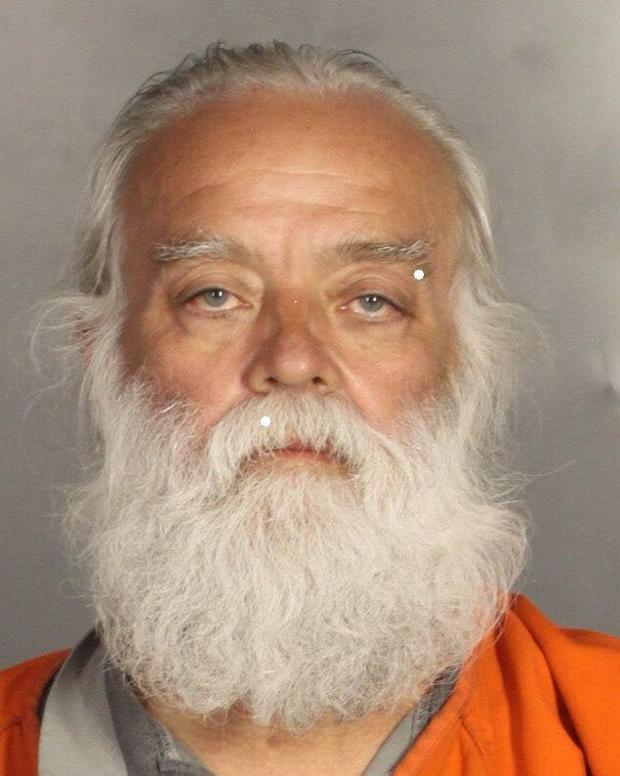
Michael Thomas
2006 Harley-Davidson motorcycleThomas, of Mesquite, is identified as the vice preident of the Kaufman County Vaqueros, a Bandidos support group. His bike had stickers that read, “Support The Fat Mexican” and “Support Your Local Bandidos MC.”
When he was arrested, he was wearing an empty black gun holster and an empty knife case, according to the court documents.
Thomas’ criminal history includes convictions for robbery, four counts of aggravated robbery and carrying a prohibited weapon. He has arrests for dangerous drugs, narcotic equipment possession and possession of marijuana.
He was released from jail on $125,000 bond.
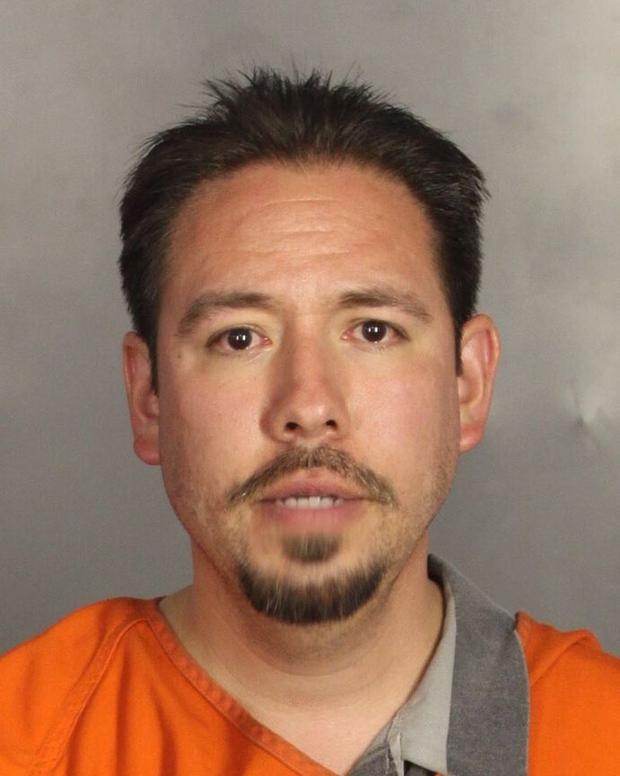
Diego Obledo
2009 Toyota VenzaObledo, of San Antonio, told police he is a “hang around” for the Valerosos Motorcycle Club, a Bandidos support group.
Police found a 9mm pistol, a red Valerosos T-shirt and camo body armor with a bulletproof plate in his Toyota, according to court records.
He has been previously arrested for resisting arrest and was freed after posting $100,000 bond for the engaging in organized criminal activity charge.
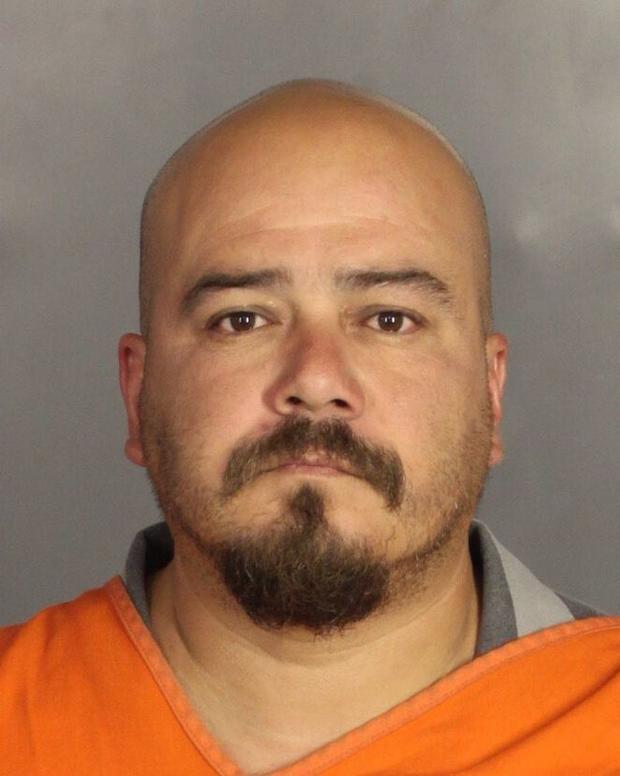
John Guerrero
2006 Chevrolet AvalancheGuerrero, of San Antonio, is identified as a member of the Bandidos and was wearing a T-shirt with a Bandidos insignia that said “Bandido Big George.” Guerrero was photographed after the incident with scratches on his left elbow, according to court documents.
Policle found a 9mm pistol in the Avalanche glove box along with two Bandidos vests, a Bandidos shirt marked “1%” and other Bandidos clothing.
Guerrero has a conviction for aggravated assault with a deadly weapon and arrests for assault, auto theft, manufacturing and delivery of a controlled substance and DWI, court records show.
He was freed on $250,000 bond.
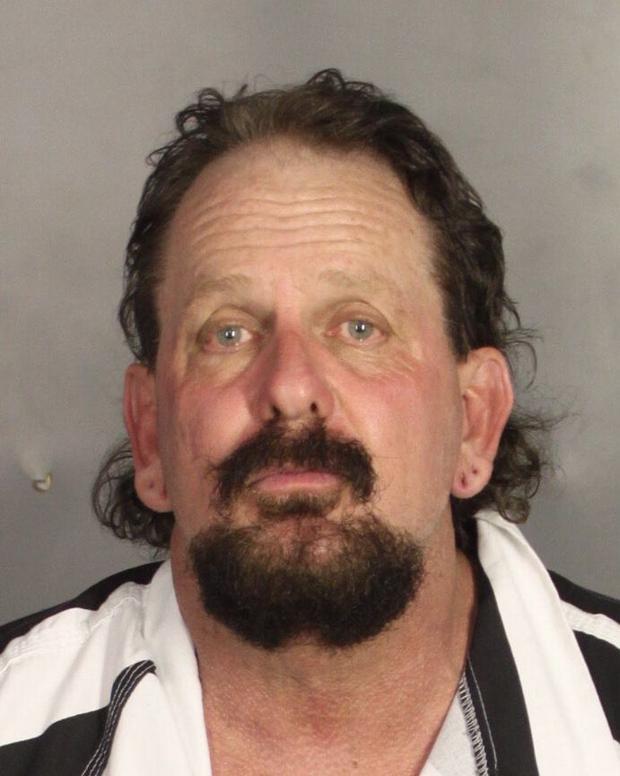
Tommy Jennings
2003 GMC SierraJennings, of North Richland Hills, is identified as a member of the Bandidos. Police found three loaded pistols, Bandidos vests and patches in the truck. When he was arrested, he was carrying a 9mm pistol and a folding knife, police said.
His criminal history includes convictions for four thefts, two DWIs and two driving with invalid license. He has been arrested for sexual assault of a child, harboring a runaway child and two thefts.
He was released on $30,000 bond.
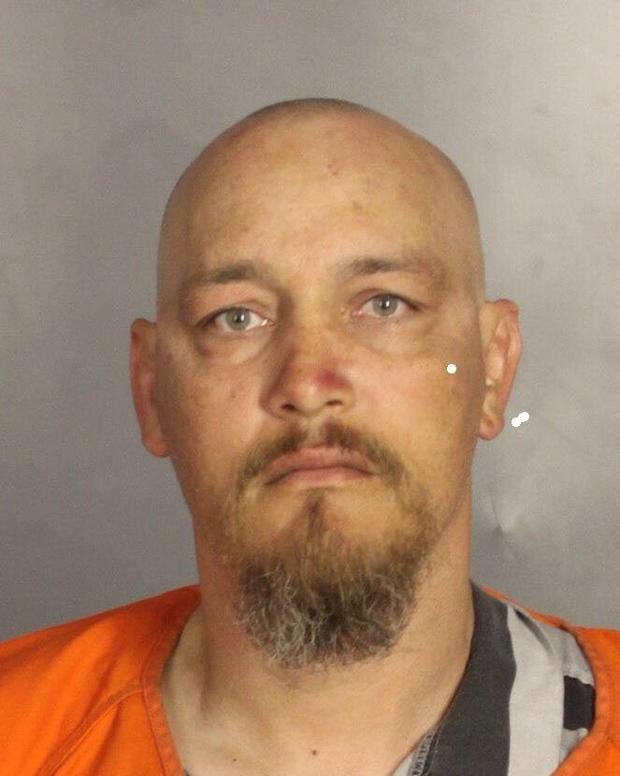
Reginald Weathers
2004 Midway motorcycleWeathers, of Forney, was arrested at the hospital after being treated. He is a member of the Bandidos and his motorcycle was found parked in the middle of the driving lane of the Twin Peaks parking lot with other Bandidos bikes. That area is where the confrontation started and where at least three of the Bandidos who were shot, or were seen on video shooting a gun, had parked their motorcycles, police said.
Weathers was freed on $250,000 bond.

Joshua Martin
2008 Chevrolet SilveradoMartin is a vice president of the Cossacks’ Titus County chapter from Pittsburg.
When he was arrested, he was wearing a black Cossacks vest with a vice president patch and patches that said, “Living on Cossack Time” and “CFFC,” which police said stands for “Cossacks Forever, Forever Cossacks.”
Police found a BB gun, a knife, two bats and a sledgehammer handle in his truck.
Martin was freed on $40,000 bond.

James Stallings
2009 Harley-Davidson motorcycleStallings is a member of the Bandidos and lives in Corsicana and had a “Bandidos Forever” sticker on his helmet, according to court documents.
He has an arrest for dangerous drugs and a “1%er” tattoo on his left forearm, the documents state.
He was freed on $50,000 bond.
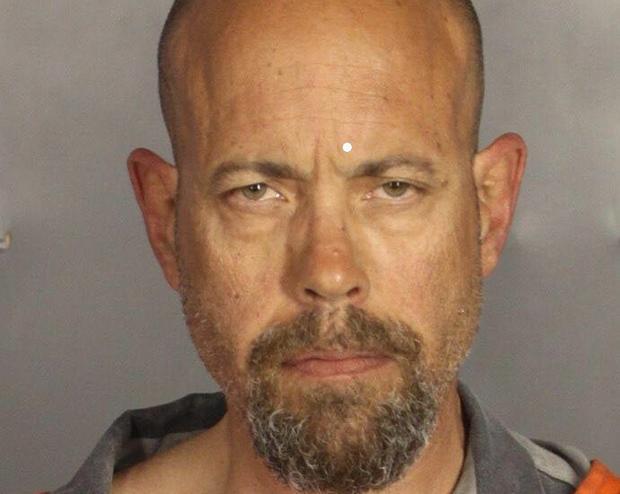
John Wilson
2013 Harley-Davidson motorcycleWilson, president of the McLennan County Cossacks chapter, owns Legends Cycles in Waco.
He told police he and his son, Jacob, both were carrying pistols that day but left the pistols in the saddlebags of their motorcycles because they don’t have permits to carry them.
Police said Wilson knew there could be trouble between the Cossacks and Bandidos that day and that the Cossacks “were prepared for it,” court records show.
He was freed after posting $100,000 bond.

Jacob Wilson
2012 Harley-Davidson motorcycleJohn Wilson said he appointed his son sergeant-at-arms of the six-member McLennan County Cossacks chapter. A patch on his vest also identified him as a “2nd Generation” Cossack.
Jacob Wilson, of Hewitt, was wearing a black T-shirt that said, “Legends Cycles” and a black cap that read “CFFC” on it.
He remains jailed under a $1 million bond.
Ray A. Nelson Jr.
2005 Harley-Davidson motorcycleDocuments supporting the seizure of Ray A. Nelson Jr.’s 2005 Harley Davidson tell this Cossack’s version of how the bloody battle at Twin Peaks began. Nelson was shot in the incident and was not arrested.
According to the documents, officers went to speak to Nelson in the hospital to explain that he would not be detained and Nelson told them what he saw.
Nelson told the officers he was standing on the front patio of Twin Peaks while a prospect was standing in the parking lot watching over the motorcycles. Nelson told officers he saw two Bandidos drive into the parking lot, intentionally steering too close to the parked bikes. The first Bandido drove over the foot of the prospect, knocking him to the ground, according to the document.
Nelson told officers he left the patio area to check on his prospect and got into a verbal argument with the Bandidos. One punched Nelson in the eye. At that moment, he saw another Bandido walk up and pull out a gun, the document states. The Bandido shot Nelson in the neck and the bullet exited his shoulder.
On a subsequent phone call with officers, Nelson told them when things got heated, he went to his bike and retrieved a handgun. He said he never fired the gun but tossed it in the parking lot after he was shot.
The records supporting the seizure of his bike state that Twin Peaks security video shows Nelson “with a pistol in his hand on the patio.” The gun was given to Nelson by another Cossack on the patio, but Nelson left the pistol on the patio.

Gregory Corrales
2003 Chevrolet Silverado 1500Documents supporting the seizure of Gregory Corrales’ 2003 Chevy pickup indicate that Corrales is a member of the Valerosos Motorcycle Club, identified as a Bandidos support group.
Corrales drove from his home in San Antonio, which is in Region 7 of the Texas COC&I, to attend the Region 1 meeting on May 17.
“It is not common for members of one COC&I region to attend a regional meeting of another area of the Texas COC&I,” the documents state.
The truck had “very identifiable markings on the vehicle showing support for the Bandidos,” according to the documents.
Corrales has previous arrests for assault causing physical injury and theft of a vehicle, the records state.
He was freed on $25,000 bond.
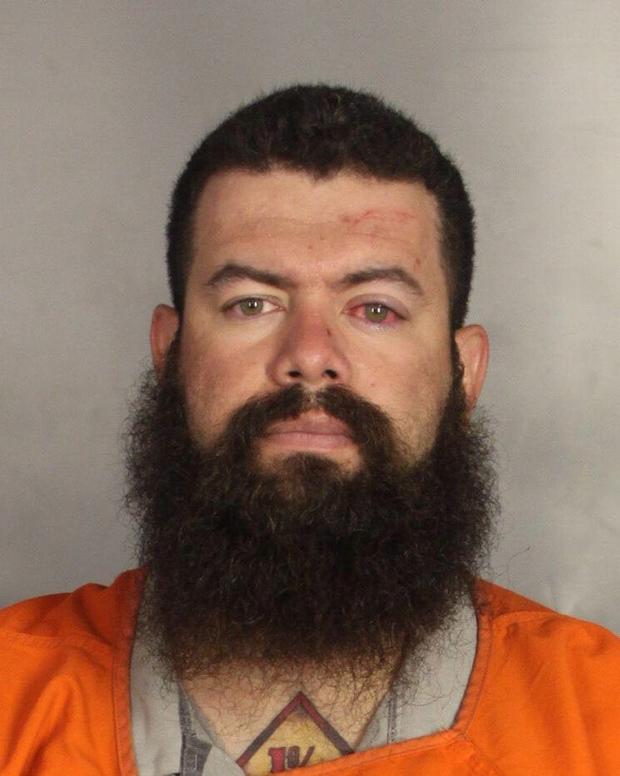
Christopher Carrizal Sr.
2003 Harley-Davidson motorcycleDocuments supporting the seizure of a 2003 Harley-Davidson motorcycle ridden by Christopher Carrizal Sr., of Garland, indicate the bike had markings that read “1%,” “Bandido Property,” and “I Do Gang Things.”
The bike is registered to Eustolia Carrizal, who is his mother and who lives at his same address in Garland, according to court records.
The documents also note Carrizal Sr. is a Bandido who has previous arrests for possession of marijuana and driving under the influence.
He was freed after posting a $200,000 bond.
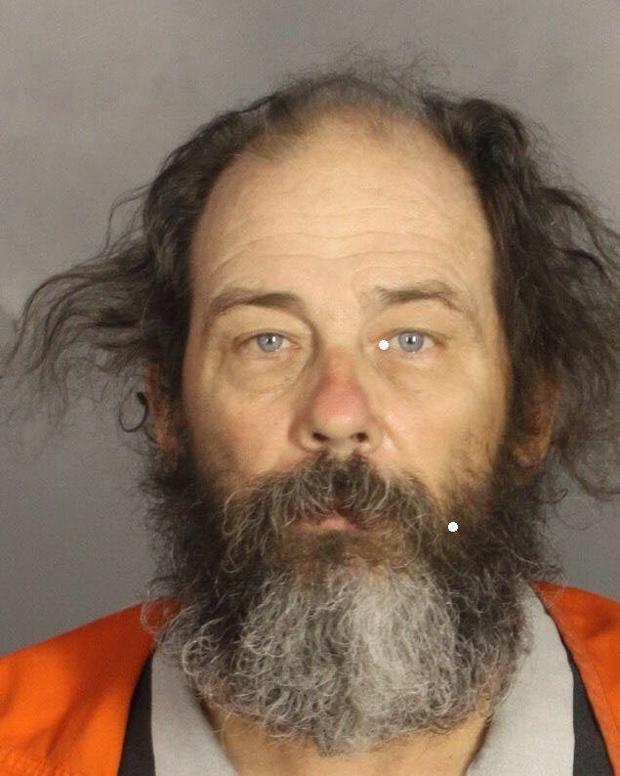
Ricky Wycough
2011 Harley-Davidson motorcycleRicky Wycough, 56, of Richardson is president of Dallas County chapter of the Vaqueros, a Bandido support group, according to court documents.
The documents note that Wycough’s chapter belongs to Texas COC&I Region 2, but he and others traveled to the Region 1 meeting that day at Twin Peaks.
His bike bears identifiable markings showing membership in the Dallas County chapter of Vaqueros and support for the Bandidos. His motorcycle sports a sticker in the Bandido colors of red and yellow that says, “We are not charming,” the documents state.
He remains free on $50,000 bond.
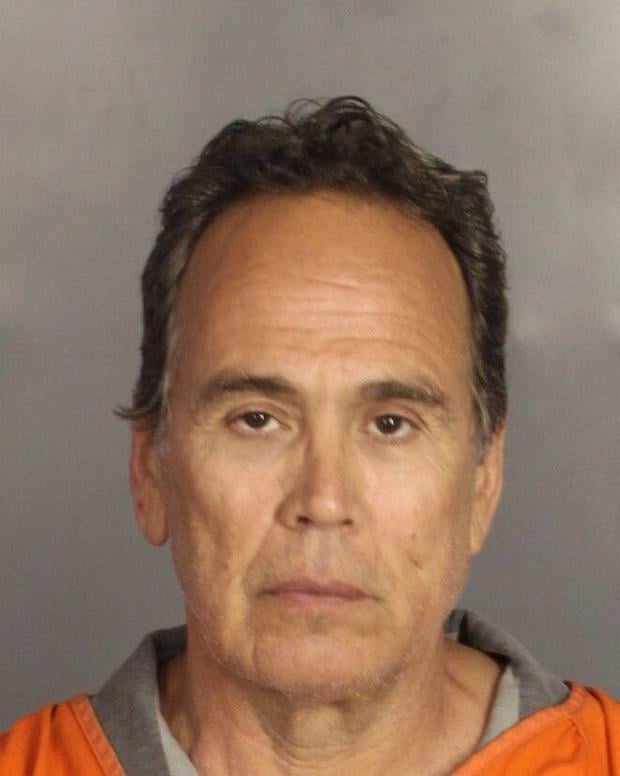
Richard Benavides
2003 Mazda MPVAccording to documents filed to seize San Antonio resident Benavides’ 2003 Mazda MPV, Benavides told officers he is a 37-year member of the Bandidos.
Inside the Mazda, officials found an SOG-brand ax and “Support Your Local Bandidos” stickers.
Benavides told officers he brought another person up from Region 7 of the COC&I for the Region 1 meeting, but he claims he only knew the man as Joseph and didn’t know his full name.
Benavides has prior convictions for driving while intoxicated and driving under the influence, and has been arrested on previous charges of theft, marijuana possession, resisting arrest, carrying a prohibited weapon.
He was freed on $300,000 bond.

Billy McRee
2008 Harley-Davidson motorcycleDocuments to support the seizure of McRee’s 2008 Harley-Davidson state that McRee told a Department of Public Safety officer that he had a Glock .40-caliber pistol drawn during the melee and was using it as a way of covering other wounded Cossacks on the ground.
McRee said he did not fire the weapon. A review of Twin Peaks video shows McRee on the patio with a weapon drawn, the documents state.
McRee, of Seagoville, is secretary/treasurer of the Mid Cities Cossacks in the Dallas-Fort Worth area. The seizure documents state he drove the Harley with identifiable markings as belonging to a Cossack to the Waco meeting of the COC&I “even though the Cossacks are not members of Region 1 or any region of the COC&I.”
He was freed on a $150,000 bond.
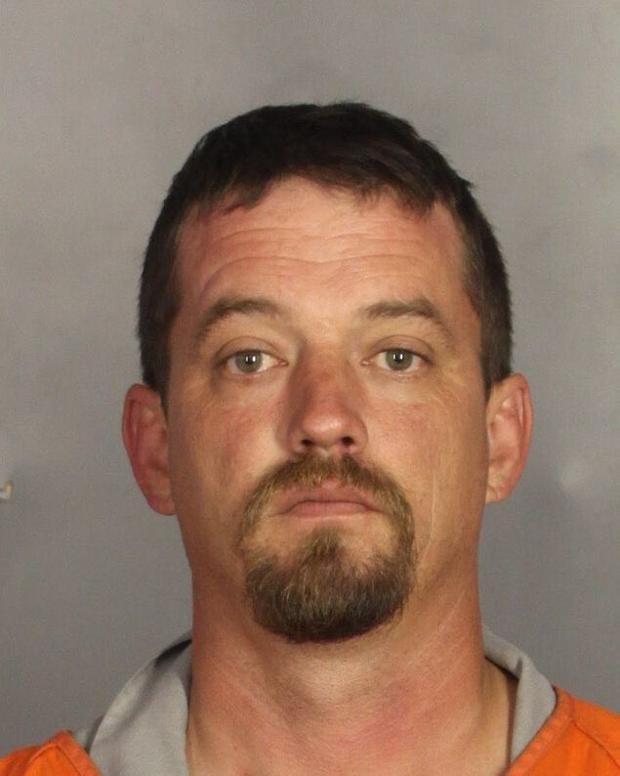
Michael Moore
1999 GMC 3500 pickup truckDocuments supporting the seizure of a 1999 GMC 3500 pickup truck belonging to Michael Moore, a member of the Scimitars from Richland Hills, say that he and the president of the Parker County chapter of the Scimitars rode together to Twin Peaks on May 17. The Scimitars are a support group of the Cossacks.
The documents do not detail Moore’s involvement in the Twin Peaks melee other than to say that Moore told an officer during an interview that he had a Sig Sauer .380-caliber handgun unloaded in his left vest pocket and a loaded magazine in the right vest pocket, but dropped the gun and magazine in the restaurant’s “bread room.”
Moore was freed after posting $25,000 bond.

Timothy Satterwhite
2003 Harley-Davidson motorcycleSatterwhite, 47, of Mingus, is a Cossack whose involvement in the Bandido-Cossack altercations goes all the way back to November 2013, when he was stabbed during a fight with Bandidos at a Logan’s Roadhouse restaurant in Abilene.
In documents supporting the seizure of Satterwhite’s 2003 Harley-Davidson, Satterwhite told a Waco police detective during an interview the night of the May 17 melee that a Cossack who went by the name of “Rattlecan” had come to Satterwhite a week before and said they needed to attend the COC&I meeting in Waco.
“Rattlecan also told Satterwhite to bring as many of their guys to go just in case things went bad,” the documents state.
Satterwhite, president of the Mingus chapter of the Cossacks, rode his bike to Waco along with eight other members to be at the COC&I meeting that “he knew would be attended by Bandidos and Bandido support clubs even after being stabbed by a Bandido” in 2013, the documents state.
“Rattlecan” was killed during the shootout. The court documents do not list Rattlecan’s real name.
Satterwhite remains jailed under $1 million bond.
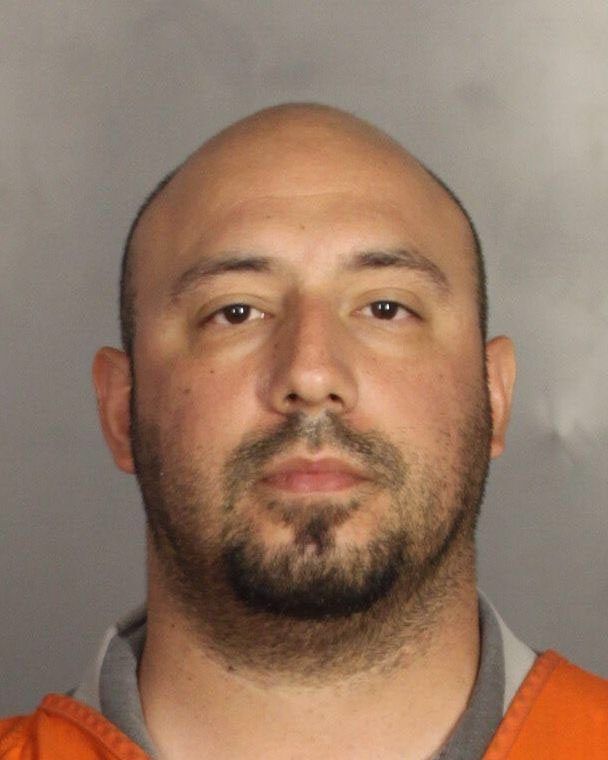
Jason Moreno
2008 Chevrolet pickupMoreno, is a vice president of the Central San Antonio chapter of the Valerosos Motorcycle Club, which are identified by the Texas Department of Public Safety as an organized street gang and a Bandidos support club.
Moreno drove his Chevrolet Silverado to the Region 1 COC&I meeting, though he lives in Region 7 of the COC&I. Court documents state that “it is not common for members of one COC&I region to attend a regional meeting of another area of the Texas COC&I.”
When police searched Moreno’s truck, they found a Glock .45-caliber handgun and an Armscor .45-caliber handgun. An ATF gun trace found that Moreno purchased at least one of the guns, according to court documents.
Prosecutors are looking to seize Moreno’s truck because it was used to “transport himself . . . and/or transport weapons from San Antonio, TX to the Twin Peaks Restaurant in Waco, TX to participate as a member of the Valerosos criminal street gang” in the events of May 17.
He remains free on $100,000 bond.

Clayton Reed
2009 Harley-Davidson motorcycleReed, a member of the Burleson chapter of the Bandidos Motorcycle Club, was wearing Bandido clothing and had a black knife sheath without a knife when he was arrested at Twin Peaks.
Court documents do not specify Reed’s involvement in the Twin Peaks shootout, other than to say that he rode to the restaurant with Bandidos nicknamed “Snapshot,” “Double Tap,” Rudy,” “Fat Boy,” “James,” and “Radar.” Reed brought with him weapons “to participate as a member of the Bandidos criminal street gang at the Twin Peaks Restaurant,” the documents state.
He remains free on $150,000 bond.

Kristoffer Rhyne
2009 Harley-Davidson motorcycleRhyne, a road captain of the Bell County chapter of the Cossacks Motorcycle Club, rode to Twin Peaks with Bell County Cossacks President John Craft.
Court documents state that his motorcycle was found after the shootout with a bullet hole in the front flaring. The documents also say that Rhyne was arrested in Bellmead in October on an aggravated assault with a deadly weapon charge, and was arrested in December in Robinson on a possession of marijuana charge.
Specifics of Rhyne’s alleged involvement in the Twin Peaks melee were not detailed in the documents, other than to state that he rode to Waco from Temple “to participate as a member of the Cossacks criminal street gang.”
Rhyne remains free on $125,000 bond.

James Ensey
2004 Harley-Davidson motorcycleEnsey, of Fort Worth, is a member of the Cossacks Motorcycle Club. Court documents state that he was arrested at Twin Peaks wearing his Cossacks vest with patches reading “Hitman,” and “Talk S--- Get hit,” among others.
Ensey had a brown leather gun holster and several Cossacks items when he was arrested. The documents refer to prior arrests for unlawfully carrying a weapon, possession of marijuana, and driving while intoxicated, but don’t mention specific acts he allegedly engaged in at the Twin Peaks shootout.
Ensey remains jailed under $100,000 bond.

Ronald Atterbury
2003 Harley-Davidson motorcycleAtterbury, who lives in Gatesville, is a member of the Coryell County chapter of the Cossacks Motorcycle Club.
When Atterbury was arrested at Twin Peaks, he was wearing Cossacks clothing, and his motorcycle had paintings and stickers which read “God Forgives, Cossacks Don’t,” among other things, and his helmet read “Eat S---,” according to court documents.
Atterbury’s specific involvement in the May 17 melee was not detailed in the documents other than to state that Atterbury used his motorcycle to “transport himself . . . and/or weapons described above from Gatesville” to Twin Peaks “to participate as a member of the Cossacks criminal street gang.”
Atterbury remains jailed under $1 million bond.
Jeffrey Veillon
2000 Ford F-250 pickupVeillon, who was wearing a Cossacks vest at the Twin Peaks shootout, was shot in the arm during the melee and treated at Baylor Scott & White Hillcrest Medical Center, according to court documents.
Veillon drove his pickup to Twin Peaks and was seen on video talking with other Cossacks on the patio prior to the shootout. When the Bandidos arrived, Veillon put his hand in a vest pocket and went out the front patio gate toward the parking lot, the documents state.
Veillon was shot, but continued to fight with Bandidos. He is seen on video picking something up off the ground and hitting a Bandido with it, according to the documents.
After the shootout ended, Veillon walked over to police officers “holding his left arm across his chest,” the documents state.
A later search of Veillon’s truck uncovered two Glock .45-caliber handguns, a .12-gauge sawed-off shotgun, a Cobra .45-caliber pistol and various Cossacks gear.
There are no records that Veillon was arrested.

Jeff Battey
2004 Harley-Davidson motorcycleBattey, of Ponder, which is in Region 2 of the Texas COC&I, was arrested on May 18 at Baylor Scott & White Hillcrest Medical Center, according to court documents. Markings on his motorcycle identify him as a member of the Bandidos Motorcycle Club, and bore stickers that read “1%er,” and “Bandidos Forever.”
The documents state that when officers approached Twin Peaks during the shootout, a Waco police officer saw Battey and Ray Allen standing behind the restaurant “in a triangulated position” to Mathew Smith, who was lying on the ground about five yards away and was “gasping for air.” Both Battey and Allen were wearing Bandidos vests.
The officer noticed that Allen had a silver handgun in his hand and said it looked like Battey had been shot in his upper right shoulder, according to the documents.
Battey was arrested upon his release from the hospital the next day. He was the first of the 177 arrested bikers to be released after he posted the full $1 million bond.
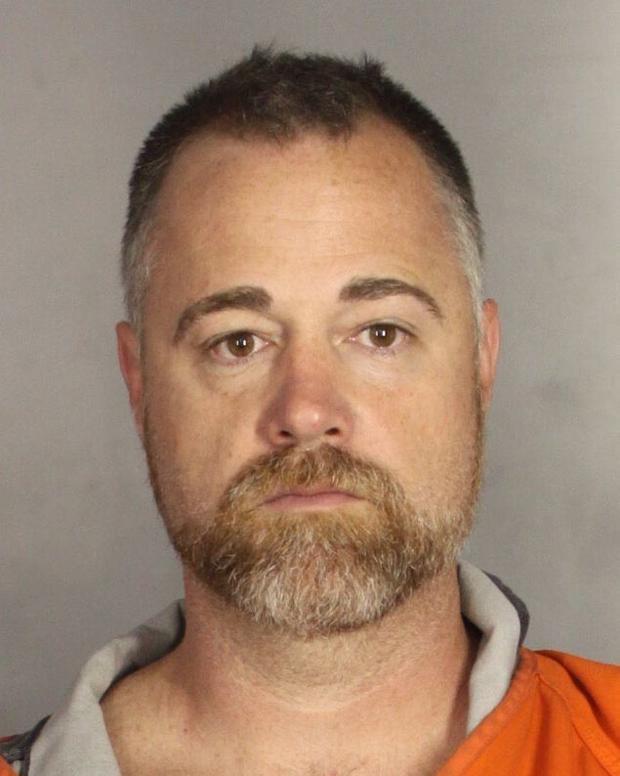
Anthony Shane Palmer
2002 Ford F-250 pickupPalmer, of Longview, which is in Region 9 of the COC&I, is identified in court documents as a secretary-treasurer of the Bandidos. He rode to Twin Peaks with three other Bandidos, according to the documents.
When Palmer’s truck was searched, officers found “Zap-950 K5 Tazing Knuckles,” and several Bandidos-related items, the documents state.
Palmer’s specific involvement in the May 17 shootout is not detailed in the documents. He was released from jail after posting $110,000 bond.

John Franklin Craft
2006 Harley-Davidson motorcycleCraft, of Temple, is identified in court documents as the president of the Bell County chapter of the Cossacks Motorcycle Club. He rode to Twin Peaks on May 17 from Temple with Rhyne and two other men, according to the documents.
Craft has previous arrests for carrying a prohibited weapon in Andrews County, driving while intoxicated in Bell County, and unlawfully carrying a weapon in Bruceville- Eddy.
The documents do not specify Craft’s alleged involvement in the Twin Peaks shootout, other than to state that he rode his motorcycle to Twin Peaks “to participate as a member of the Cossacks criminal street gang.”
He was freed after posting $75,000 bond.



































































































































